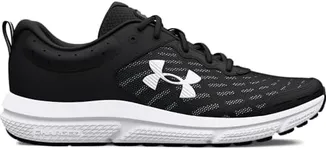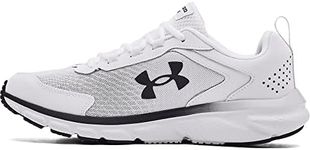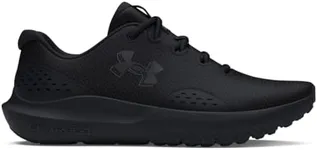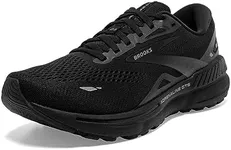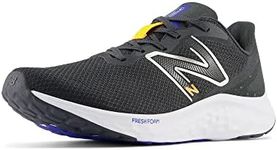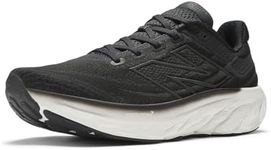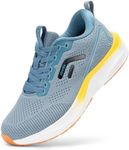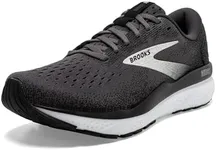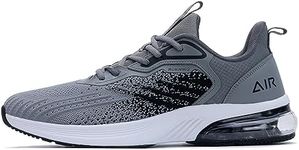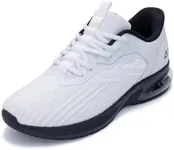Buying Guide for the Best Road Running Shoes For Men
Choosing the right road-running shoes is crucial for comfort, performance, and injury prevention. The right pair of shoes can make a significant difference in your running experience. When selecting road-running shoes, consider factors such as fit, cushioning, support, and durability. Understanding the key specifications will help you make an informed decision that best suits your running style and needs.FitFit refers to how well the shoe conforms to the shape of your foot. A good fit is essential to prevent blisters, discomfort, and injuries. Shoes that are too tight can cause pain and restrict blood flow, while shoes that are too loose can lead to instability and chafing. To find the right fit, ensure there is about a thumb's width of space between your longest toe and the end of the shoe, and that the shoe feels snug but not tight around the midfoot and heel.
CushioningCushioning is the amount of padding in the shoe, which helps absorb impact and provide comfort. This is important for reducing stress on your joints and muscles during runs. Cushioning levels can vary from minimal to maximum. Minimal cushioning offers a more natural feel and is suitable for runners who prefer a closer connection to the ground. Moderate cushioning provides a balance of comfort and responsiveness, ideal for most runners. Maximum cushioning offers the most shock absorption and is great for long-distance runners or those with joint issues.
SupportSupport refers to the shoe's ability to stabilize your foot and prevent excessive movement. This is important for maintaining proper alignment and reducing the risk of injuries. Support levels range from neutral to stability to motion control. Neutral shoes are best for runners with a normal arch and minimal pronation. Stability shoes offer added support for runners with mild to moderate overpronation. Motion control shoes provide the highest level of support for runners with severe overpronation or flat feet.
DurabilityDurability is the shoe's ability to withstand wear and tear over time. This is important for ensuring that your shoes last through many miles of running. Durability can be influenced by the materials used in the shoe's construction, such as the outsole, midsole, and upper. Look for shoes with high-quality materials and reinforced areas that are prone to wear, such as the heel and toe. If you run frequently or on rough surfaces, prioritize durability to get the most out of your investment.
WeightWeight refers to how heavy the shoe feels on your foot. This is important for your running efficiency and speed. Lighter shoes can help you run faster and feel less fatigued, while heavier shoes may provide more cushioning and support. Lightweight shoes are ideal for racing and speedwork, while midweight shoes offer a balance of lightness and cushioning for everyday training. Heavier shoes are suitable for long-distance running or for runners who need extra support and cushioning.
BreathabilityBreathability is the shoe's ability to allow air to circulate and keep your feet cool and dry. This is important for comfort, especially during long runs or in hot weather. Breathable shoes typically have mesh or perforated uppers that promote airflow. If you tend to sweat a lot or run in warm climates, look for shoes with good breathability to prevent overheating and blisters. For cooler climates, you may prefer shoes with less breathability to keep your feet warm.
